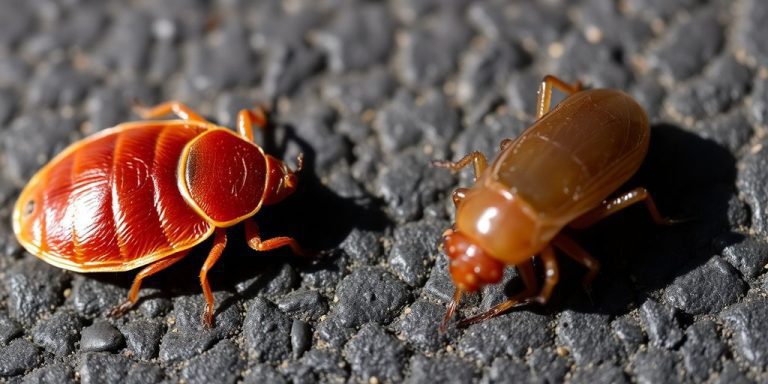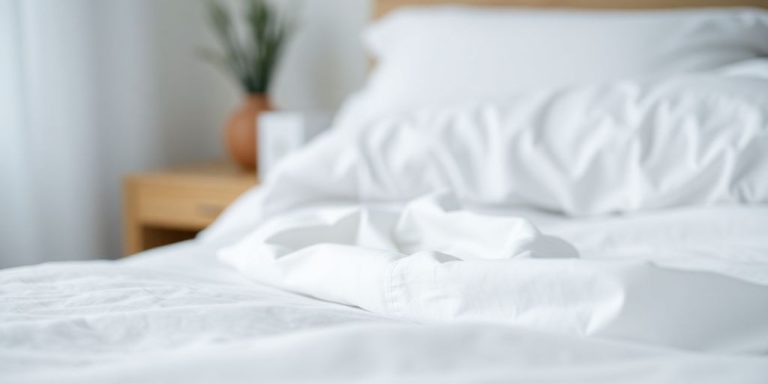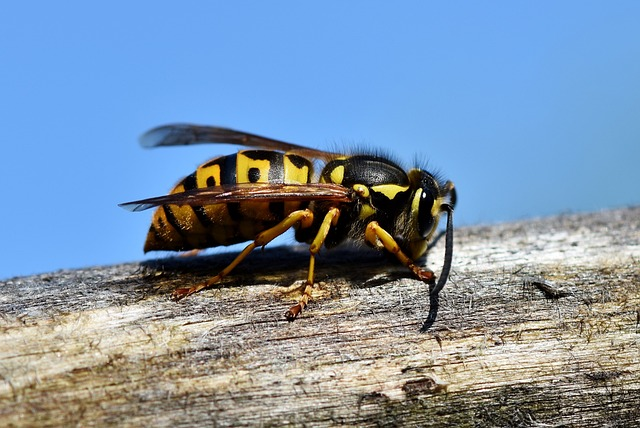Does Bleach kill wasps instantly?
Wasp infestation presents a pressing concern for homeowners, outdoor enthusiasts, and agriculturalists alike. These tiny yet formidable creatures build nests in various locations, from eaves and attics to bushes and underground burrows, posing significant risks to human health and the environment.
Their aggressive nature and potent stings make their presence not only bothersome but potentially hazardous, especially for those allergic to their venom.
Amidst the array of remedies proposed to address wasp infestation, the utilization of bleach emerges as a notable contender. Bleach, a commonly available household product renowned for its disinfecting properties, has garnered attention for its potential effectiveness in eradicating these resilient pests.
Its powerful chemical composition, primarily sodium hypochlorite, serves as a potent agent against bacteria, viruses, and fungi. When applied correctly, it might offer a solution to deter wasps and dismantle their nests.
However, the usage of bleach in managing wasp infestations demands careful consideration and understanding. While it exhibits promising attributes to kill wasps instantly, its application requires precision to ensure safety for both users and the environment.
As we delve deeper into the efficacy and implications of employing bleach as a means to kill wasps, it becomes crucial to explore its application methods, potential risks, and overall effectiveness in addressing this prevalent concern.

Let’s get started.
Understanding Wasps: Is Wasp Infestations a Risk
Wasps, characterized by their slender bodies and distinctive black and yellow markings, are social insects that form colonies with hierarchical structures. They typically exhibit aggressive behavior when their nests are disturbed, defending their territory vigorously.
These wasps’ nests, constructed from a papery substance made from chewed wood pulp and saliva, vary in location and size, ranging from small aerial constructions to large underground burrows or even concealed within walls and attics.
Understanding wasp behavior is crucial in assessing the risks associated with infestations. Wasps are predatory and primarily feed on other insects, making them beneficial for controlling pest populations.
However, their defensive nature poses significant risks when the wasp nests are threatened. They release alarm pheromones, signaling to other wasp colony members to attack perceived threats, resulting in painful stings. For individuals allergic to their venom, these stings can trigger severe reactions, leading to medical emergencies.
Handling wasp infestations carries inherent risks. Attempting DIY removal without proper knowledge or protective gear can provoke aggressive responses from the colony, escalating the danger.
Additionally, disturbing nests in inaccessible areas, such as within walls or ceilings, can lead to structural damage or create health hazards due to the release of harmful chemicals from the nest materials or inappropriate removal methods.
Awareness of wasp behavior, nest locations, and the potential risks associated with handling infestations is crucial for devising effective and safe strategies to manage these insects without compromising safety or exacerbating the situation.
What Is Bleach?
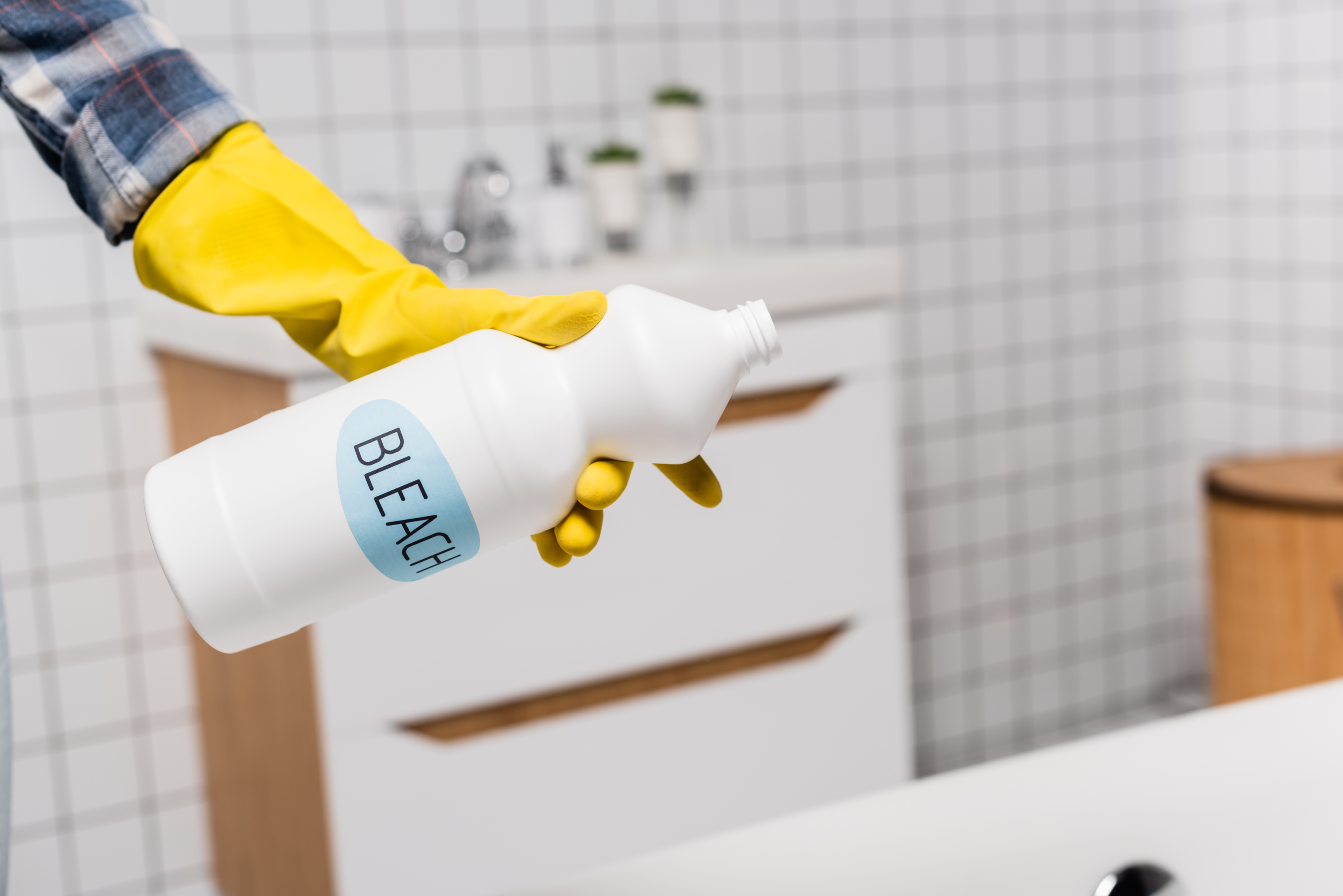
Bleach is a chemical solution primarily composed of sodium hypochlorite or calcium hypochlorite, renowned for its powerful disinfectant properties and wide-ranging applications in cleaning and sanitization.
Its ability to break down organic matter and eliminate microorganisms makes it a popular choice for sanitizing surfaces and purifying water.
In the realm of pest control, bleach has garnered attention for its potential efficacy against wasp infestations. When applied, bleach disrupts the protective outer layers of many insects, leading to dehydration and eventual death.
However, its effectiveness varies depending on factors such as concentration, application method, and the specific species of wasps.
Scientifically, bleach interacts with wasps through its highly reactive chemical components. Sodium hypochlorite, the active ingredient in many bleaches, releases hypochlorous acid when it comes into contact with water.
This acid is corrosive and disrupts the cell membranes and proteins of the wasps upon contact, leading to cellular damage and dehydration of attracting insects. This mode of action affects their respiratory systems and outer protective layers, ultimately causing harm or death to the insects.
While bleach shows promise in combating wasp infestations, its application requires precision and caution due to its corrosive nature and potential harm to surrounding environments. Additionally, its efficacy can vary based on factors like nest size, location, and the specific species of wasps involved.
Proper protective equipment and adherence to safety guidelines are essential when considering the use of bleach in pest control to mitigate risks and ensure effective management of infestations.
Bleach vs. Wasps: Does It Work Instantly?
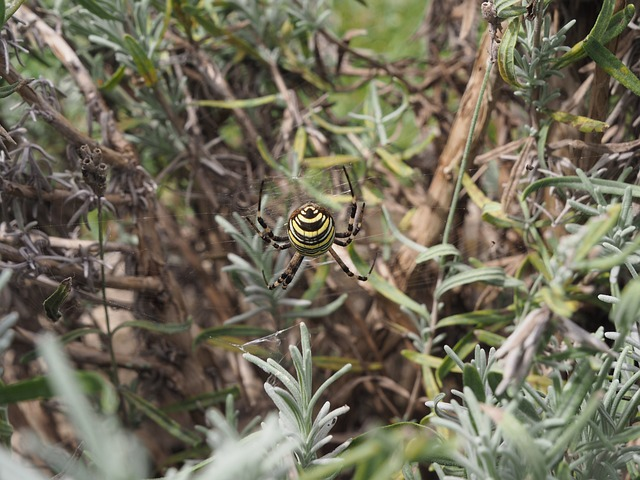
When bleach comes into direct contact with wasps, its effects on the insects are not instantaneous. While bleach possesses potent properties that can harm and ultimately kill individual wasps themselves, the immediate impact may not result in instant death or immobilization.
Several factors contribute to the speed and efficiency of bleach in killing wasps upon contact:
- Concentration and Dilution: The concentration of bleach used plays a significant role. Higher concentrations are more potent but can also pose greater risks to humans and the environment. Diluted bleach may take longer to kill wasps.
- Application Method: How the bleach is applied can impact its effectiveness. Spraying directly onto the wasps or their nests allows for direct contact, potentially speeding up the process compared to indirect methods.
- Wasp Species and Nest Size: Different species of wasps might react differently to bleach. The size and location of the nest also affect how effectively the bleach reaches and affects the entire colony.
- Chemical Reaction Time: The interaction between bleach and the wasp’s body takes time. Bleach disrupts the insect’s outer protective layers and cellular structure, leading to dehydration and damage over time rather than immediate effects.
- Environmental Conditions: Factors like temperature and humidity can influence the rate at which bleach kills wasps. Warmer temperatures might accelerate the reaction, while adverse weather conditions could slow it down.
While bleach can be effective in harming and ultimately kill wasps, its immediate impact is not typically instantaneous. It requires time for the chemical reaction to disrupt the insects’ physiology and cause harm.
Immediate effects might include agitation or attempts by the wasps to remove the foreign substance, but visible signs of distress or mortality may take some time to manifest.
Careful consideration of these factors is crucial when using bleach for wasp control to ensure both safety and efficacy in managing infestations.
Safety Considerations When Applying Bleach
When using bleach around wasps, several safety precautions and measures should be taken into account to ensure personal safety and effective pest management:
- Protective Gear: Wear appropriate protective clothing, including long sleeves, pants, gloves, and goggles or a face mask to prevent direct contact with bleach and potential wasp stings.
- Ventilation: Use bleach in well-ventilated areas to minimize inhalation of fumes. Open windows and doors to allow for adequate airflow.
- Correct Dilution: Follow manufacturer instructions for diluting bleach properly. Using excessively concentrated bleach can be harmful and may not necessarily enhance its effectiveness against wasps.
- Avoiding Nest Disturbance: Minimize physical agitation or disturbance of the nest before or during bleach application to prevent aggressive reactions from the wasps.
- Application Technique: Apply bleach directly to the nest or affected area using a sprayer or a method that ensures targeted application while maintaining a safe distance from the nest.
- Observation Time: Allow sufficient time for the bleach to take effect on the wasps before attempting to remove the nest or clean the area. Avoid immediate contact with treated surfaces.
Alternative methods or additional steps for safe application around wasps include:
- Non-Chemical Solutions: Consider non-chemical approaches like using soapy water, peppermint oil, or commercially available natural wasp deterrents as alternatives to bleach. These methods can deter wasps without posing the same risks.
- Professional Assistance: If the infestation is extensive or the nest is in a hard-to-reach area, seek assistance from pest control professionals with the expertise and proper equipment to handle the situation safely.
- Nighttime Treatment: Since wasps are less active at night, treating the nest during this time might reduce the risk of encountering aggressive behavior.
- Post-Treatment Cleanup: After the application, wait for a considerable period to ensure the wasps are no longer active before attempting to remove the nest or clean the area. Dispose of the nest carefully, preferably by sealing it in a plastic bag and placing it in an outdoor trash container.
Prioritizing safety measures and considering alternative methods can minimize risks associated with using bleach around wasps while effectively managing infestations.
Always exercise caution and assess the situation before attempting any DIY pest control measures.
Wasp Control Application Techniques
When using bleach to address wasp infestations, employing the following best practices ensures both effectiveness effective control, and safety:
- Safety Gear: Wear protective clothing, including long sleeves, pants, gloves, and goggles, to shield yourself from potential contact with both bleach and wasp stings.
- Dilution and Preparation: Dilute bleach according to manufacturer guidelines. Prepare the solution in a spray bottle or a container suitable for controlled application.
- Identifying the Nest: Locate the wasp nest accurately before applying bleach. Be cautious and observe from a safe distance to determine the nest’s location and assess the extent of the infestation.
- Targeted Application: Use a sprayer or a method that allows for precise and targeted application of the bleach solution directly onto the nest. Ensure that the bleach reaches the nest thoroughly, covering the surface area.
- Distance and Angle: Maintain a safe distance from the nest while applying the bleach. Use a long-reaching tool or nozzle attachment to keep a safe distance while still effectively reaching the nest.
- Application Timing: Apply bleach during the early morning or late evening when wasps are less active to minimize the risk of encountering aggressive behavior.
- Observation and Follow-Up: After application, monitor the nest from a safe distance to observe wasp activity. Avoid approaching the area until it’s confirmed that the wasps have been effectively eliminated.
- Disposal and Cleanup: Once you’re certain the wasps are no longer active, cautiously remove the nest using protective gear and dispose of it in a sealed bag. Clean the treated area thoroughly to remove any residual bleach.
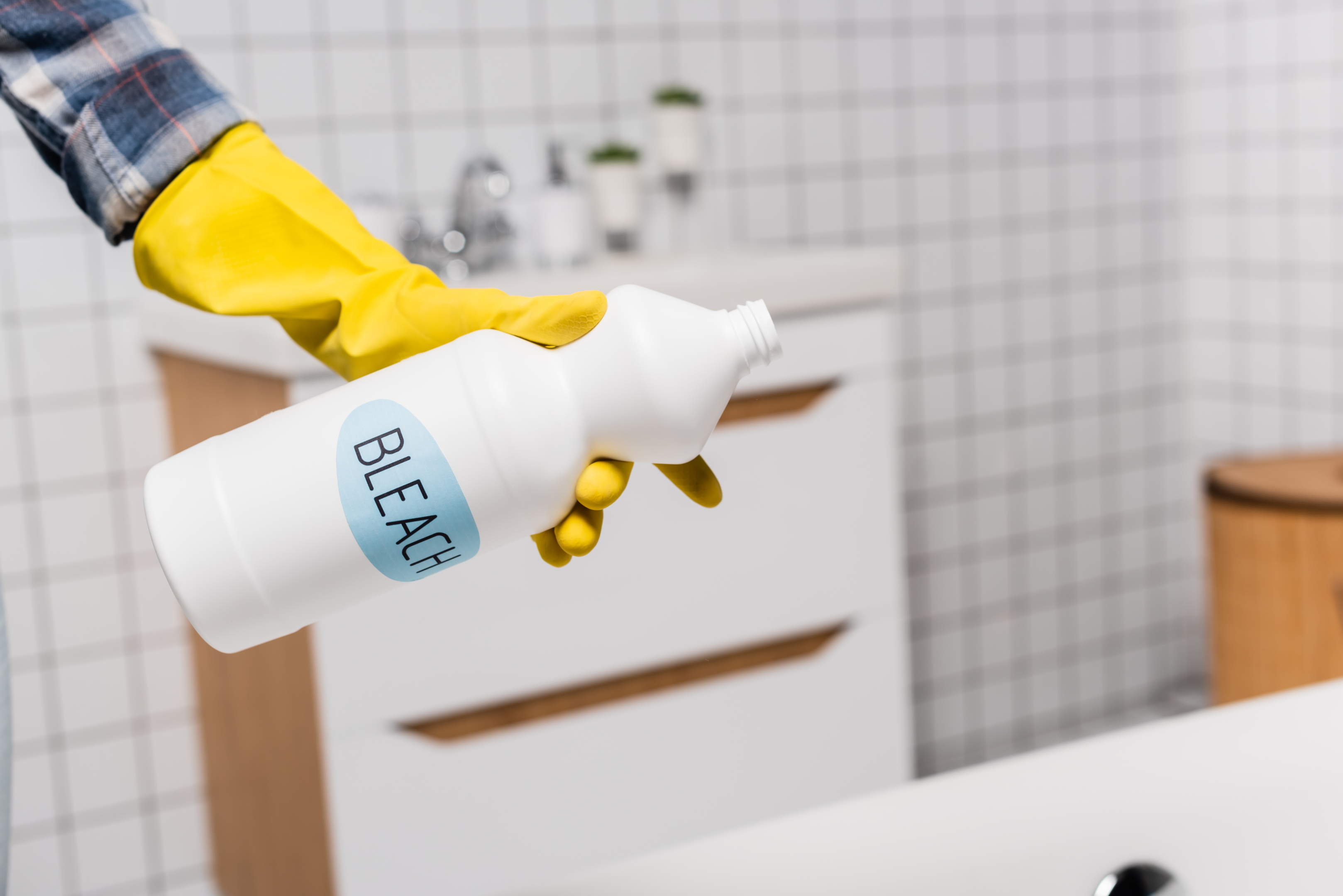
Additional tips for targeting nests effectively without endangering yourself or the environment
- Accessibility: Ensure the nest is accessible before attempting treatment. Avoid reaching into confined spaces or high locations where you might lose control or balance.
- Avoiding Overuse: Use the appropriate amount of bleach needed to treat the nest. Excessive use may pose risks to the environment and surrounding areas.
- Environmental Impact: Be mindful of where the bleach runoff might flow. Avoid applying it near water sources, plants, or areas that could be negatively impacted by the chemical.
- Seeking Professional Help: If the nest is in a challenging or hazardous location, or if you’re uncomfortable handling the situation, consider seeking assistance from pest control professionals.
Following these techniques and safety measures ensures a more targeted and safer application of bleach to eliminate wasp infestations while minimizing risks to yourself and the environment.
Frequently Asked Questions
1. Can You Use Essential Oils to Deter Wasps?
Essential oils like peppermint, citronella, and lemongrass can act as natural repellents for wasps and bees. Mixing these oils with water and spraying them in areas where wasps frequently might deter them temporarily.
2. What Is the Most Effective Way to Get Rid of Wasps?
Using a commercial wasp spray designed for instant killing and acting from a safe distance is often the most effective way to eliminate wasps quickly.
3. How to Get Rid of Wasps in the Garden?
Remove any food sources that attract wasps, such as fallen fruit or open garbage. Using wasp traps or spraying specific areas with deterrents can also help keep wasps away from the garden.
4. What Immediately Kills Wasps?
Commercial wasp sprays containing chemicals like pyrethroids or organophosphates are designed to kill wasps immediately upon contact.
5. How to Get Rid of Wasp Nests?
It’s safest to hire a professional pest control service to remove a wasp nest or spray to kill wasps. If attempting it yourself, wait until nightfall when wasps are less active, wear protective clothing, and use an appropriate insecticide.
6. How Long Does It Take to Get Rid of a Wasp?
If using a fast-acting insecticide, it can take just a few seconds for a wasp to die upon contact. Removing a nest might take longer and may require multiple treatments.
7. How to Prevent a Wasp Nest from Forming?
Regularly inspect your property for signs of nests. Keep areas clean, especially those prone to attracting wasps. Blocking entry points and using deterrents can also discourage nest building.
8. Does Bleach Kill Wasps Instantly?
Bleach isn’t a recommended method for killing wasps. While it might affect some insects upon direct contact, it’s not as effective or safe as commercially available wasp sprays.
9. Should You Kill Wasps?
Wasps play a role in ecosystems, but if they pose a threat or danger, eliminating them may be necessary. However, if possible, relocating or deterring them without killing might be a more environmentally friendly approach.
10. Should You Be Worried About Wasp Stings?
Wasp stings can be painful and, for some individuals, can cause severe allergic reactions. It’s important to exercise caution and seek medical attention if stung, especially for those allergic to insect stings.
11. What To Do if There’s a Big Wasp Nest On My Property?
Contact a professional pest control service immediately to assess and safely remove the nest, especially if it poses a danger nest near others.
12. Does Vinegar Kill Wasps?
While vinegar might repel wasps due to its strong smell, it isn’t a reliable method for killing them. Commercial wasp sprays or professional extermination are more effective options.
Conclusion
When addressing wasp infestations with bleach or any control method, prioritizing safety and effectiveness is key. Bleach can be a potent tool against these pests, but its application demands caution, precision, and an understanding of both its potential and limitations.
It’s crucial to recognize that while bleach can disrupt and eliminate wasps, its immediate effects might not be instantaneous, requiring patience and careful observation.
Balancing the desire for immediate results with safety considerations is vital. Utilize protective gear, apply bleach strategically, and consider alternative methods or professional assistance for complex infestations.
Respect the environment by minimizing runoff and disposing of nest remnants responsibly. To effectively eliminate stinging insects like yellow jackets and wasps, using a reliable wasp killer is essential for targeting all the wasps nest.

